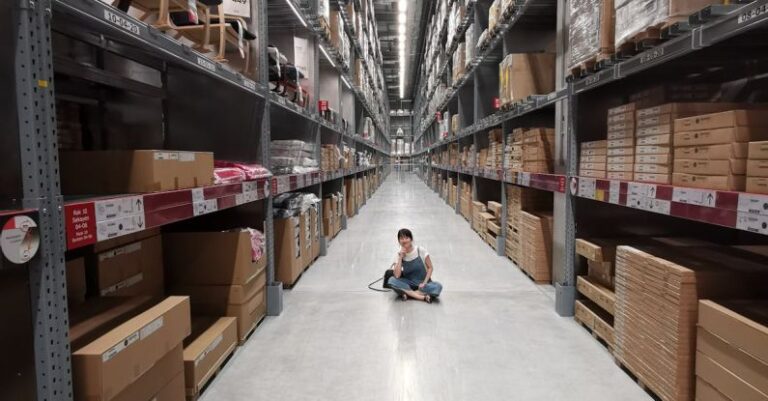
In today’s dynamic business landscape, retail industry players face a constant challenge of adapting to ever-evolving market trends to stay competitive and relevant. With consumer behaviors and preferences continuously shifting, retailers must be agile in responding to these changes to meet customer demands and sustain business growth. Let’s explore how retailers navigate and embrace these fluctuations in the market to thrive in an increasingly competitive environment.
Understanding Consumer Behavior
At the core of retail adaptation to changing market trends lies a deep understanding of consumer behavior. Retailers need to stay attuned to consumer preferences, shopping habits, and buying patterns to anticipate and respond effectively to market shifts. By leveraging data analytics and market research, retailers can gain valuable insights into consumer behavior, enabling them to tailor their products, services, and marketing strategies to meet evolving consumer needs.
Personalized Customer Experience
In an era where personalization is key to customer loyalty, retailers are increasingly focusing on providing personalized shopping experiences to enhance customer satisfaction and drive repeat business. By leveraging technology such as artificial intelligence and big data analytics, retailers can gather and analyze customer data to create personalized recommendations, offers, and promotions tailored to individual preferences. This personalized approach not only fosters customer loyalty but also helps retailers stay ahead of market trends by offering relevant and timely solutions to consumers.
Omnichannel Retailing
The rise of digital technology has transformed the retail landscape, giving rise to omnichannel retailing as a key strategy for retailers to adapt to changing market trends. Omnichannel retailing seamlessly integrates online and offline channels to provide customers with a unified shopping experience across multiple touchpoints. By offering a seamless shopping experience, retailers can cater to the preferences of modern consumers who expect convenience, flexibility, and personalized interactions throughout their shopping journey.
Agile Supply Chain Management
To keep pace with changing market trends, retailers need to adopt agile supply chain management practices that enable them to respond quickly to shifts in consumer demand and market dynamics. By optimizing inventory management, streamlining logistics, and fostering collaboration with suppliers, retailers can minimize lead times, reduce costs, and improve overall operational efficiency. An agile supply chain allows retailers to adapt swiftly to changing market trends, ensuring that they can meet customer demands in a timely manner.
Innovative Merchandising Strategies
In a competitive retail landscape, innovative merchandising strategies play a crucial role in helping retailers differentiate themselves and capture consumer attention. By experimenting with product assortments, store layouts, and visual merchandising techniques, retailers can create unique and engaging shopping experiences that resonate with their target audience. By staying ahead of market trends and continuously innovating their merchandising strategies, retailers can attract new customers, drive sales, and build brand loyalty in a rapidly evolving market.
Strategic Partnerships and Collaborations
In the face of changing market trends, retailers can benefit from forming strategic partnerships and collaborations with other industry players to expand their reach, access new markets, and leverage complementary strengths. By partnering with suppliers, manufacturers, technology providers, or even other retailers, businesses can tap into new opportunities, share resources, and drive innovation in response to emerging market trends. Collaborative efforts enable retailers to stay agile, competitive, and adaptable in a dynamic retail landscape.
Adapting to Emerging Technologies
In the digital age, emerging technologies such as artificial intelligence, augmented reality, and blockchain are reshaping the retail industry and revolutionizing how businesses engage with customers. Retailers that embrace and leverage these technologies can gain a competitive edge by offering innovative solutions, enhancing customer experiences, and optimizing business operations. By staying abreast of emerging technologies and investing in digital transformation, retailers can position themselves for success in a fast-changing market environment.
Embracing Sustainability and Ethical Practices
In response to growing consumer awareness and demand for sustainable and ethical products, retailers are increasingly incorporating sustainability practices into their business operations. By adopting environmentally friendly practices, sourcing ethically produced merchandise, and supporting social causes, retailers can appeal to conscious consumers, differentiate their brand, and contribute to positive social and environmental impact. Embracing sustainability and ethical practices not only aligns retailers with changing market trends but also enhances brand reputation and fosters customer loyalty in a socially responsible marketplace.
Innovative Marketing and Communication Strategies
In a crowded marketplace, retailers need to stand out and capture consumer attention through innovative marketing and communication strategies that resonate with their target audience. By leveraging social media, influencer partnerships, experiential marketing, and other creative tactics, retailers can engage customers, drive brand awareness, and stimulate demand for their products and services. By staying agile, adaptable, and responsive in their marketing efforts, retailers can effectively navigate changing market trends and maintain a competitive edge in a dynamic retail environment.
Remaining Agile in a Dynamic Market Environment
As the retail industry continues to evolve and adapt to changing market trends, retailers must remain agile, innovative, and customer-centric to stay ahead of the curve. By understanding consumer behavior, embracing digital transformation, optimizing supply chain operations, fostering strategic partnerships, and adopting sustainable practices, retailers can navigate market fluctuations, capitalize on emerging opportunities, and thrive in an increasingly competitive marketplace. By staying attuned to market trends, listening to customer feedback, and continuously evolving their strategies, retailers can position themselves for long-term success and growth in an ever-changing retail landscape.





